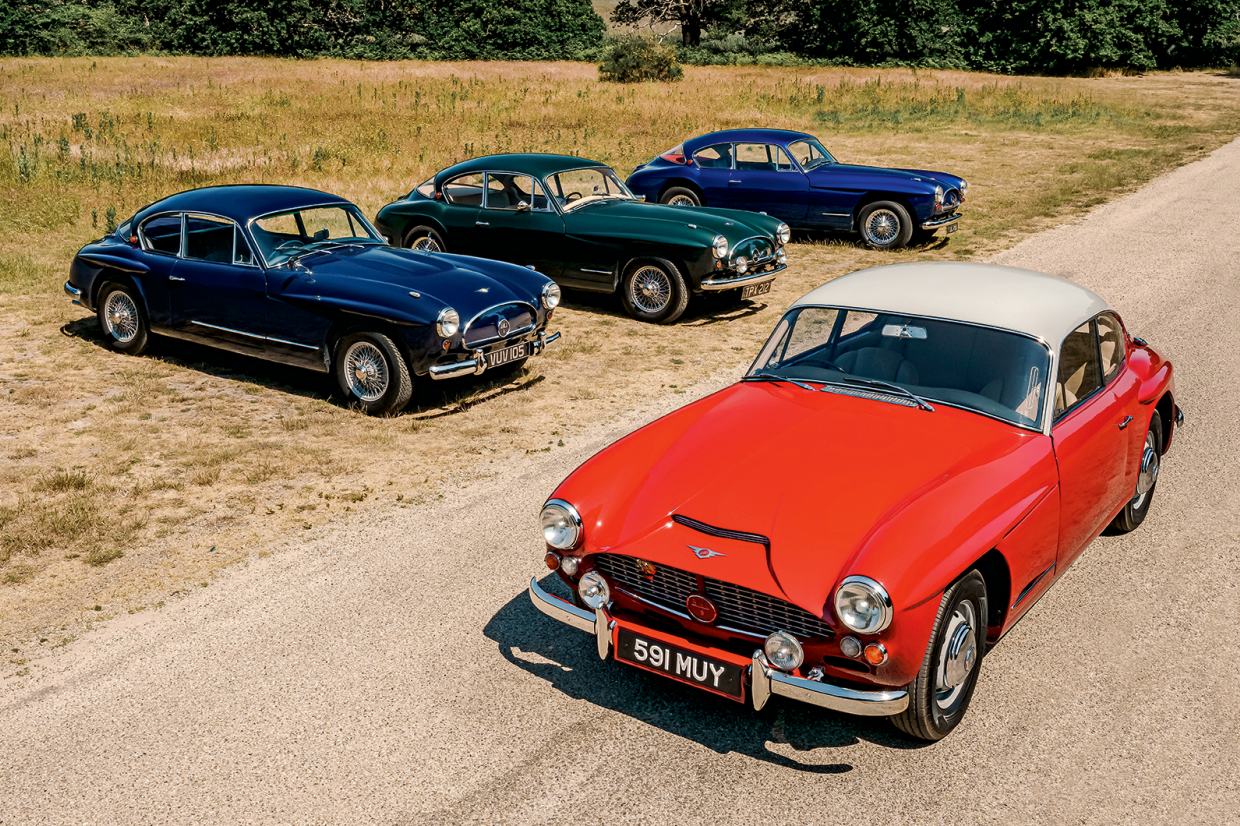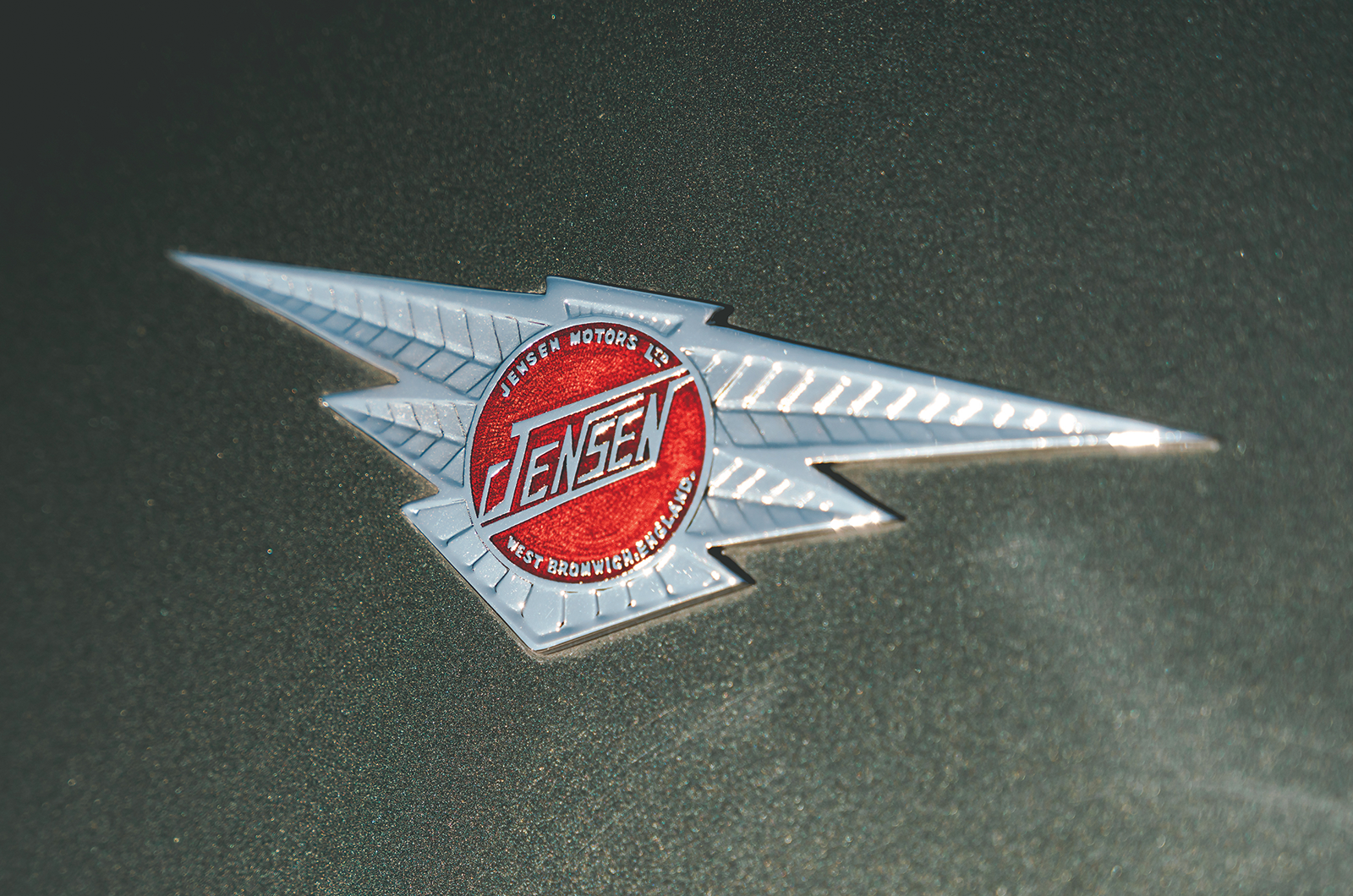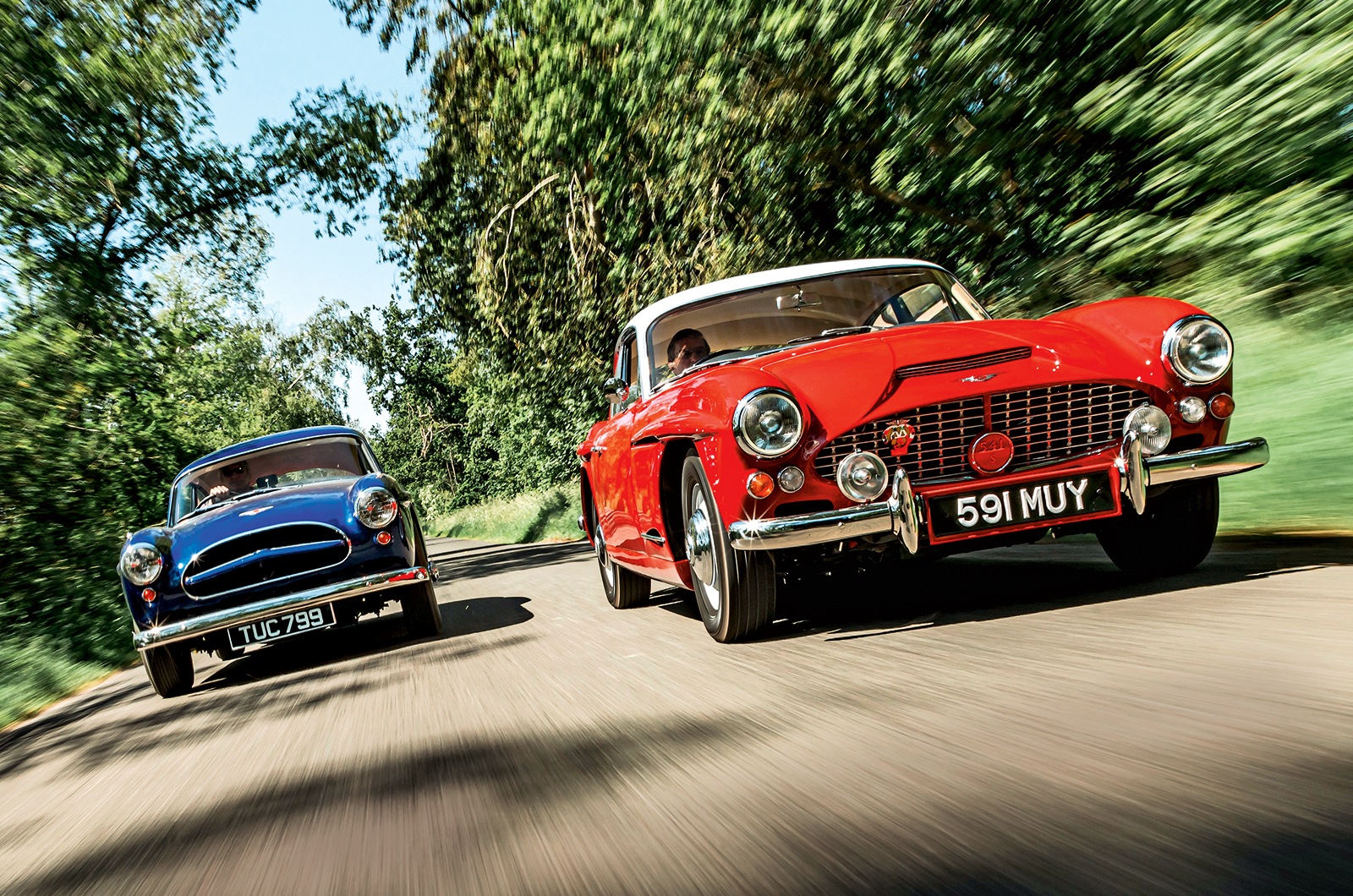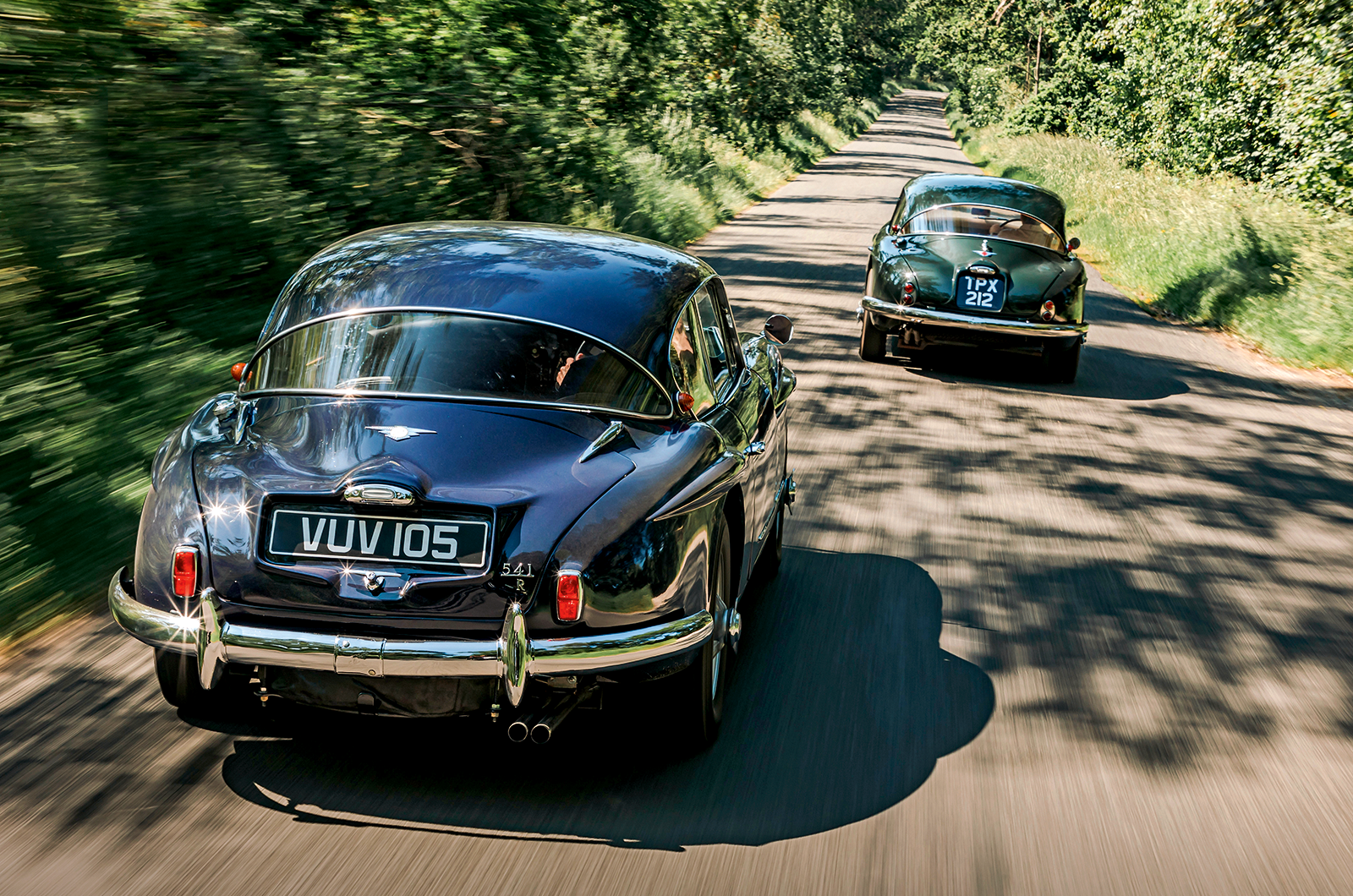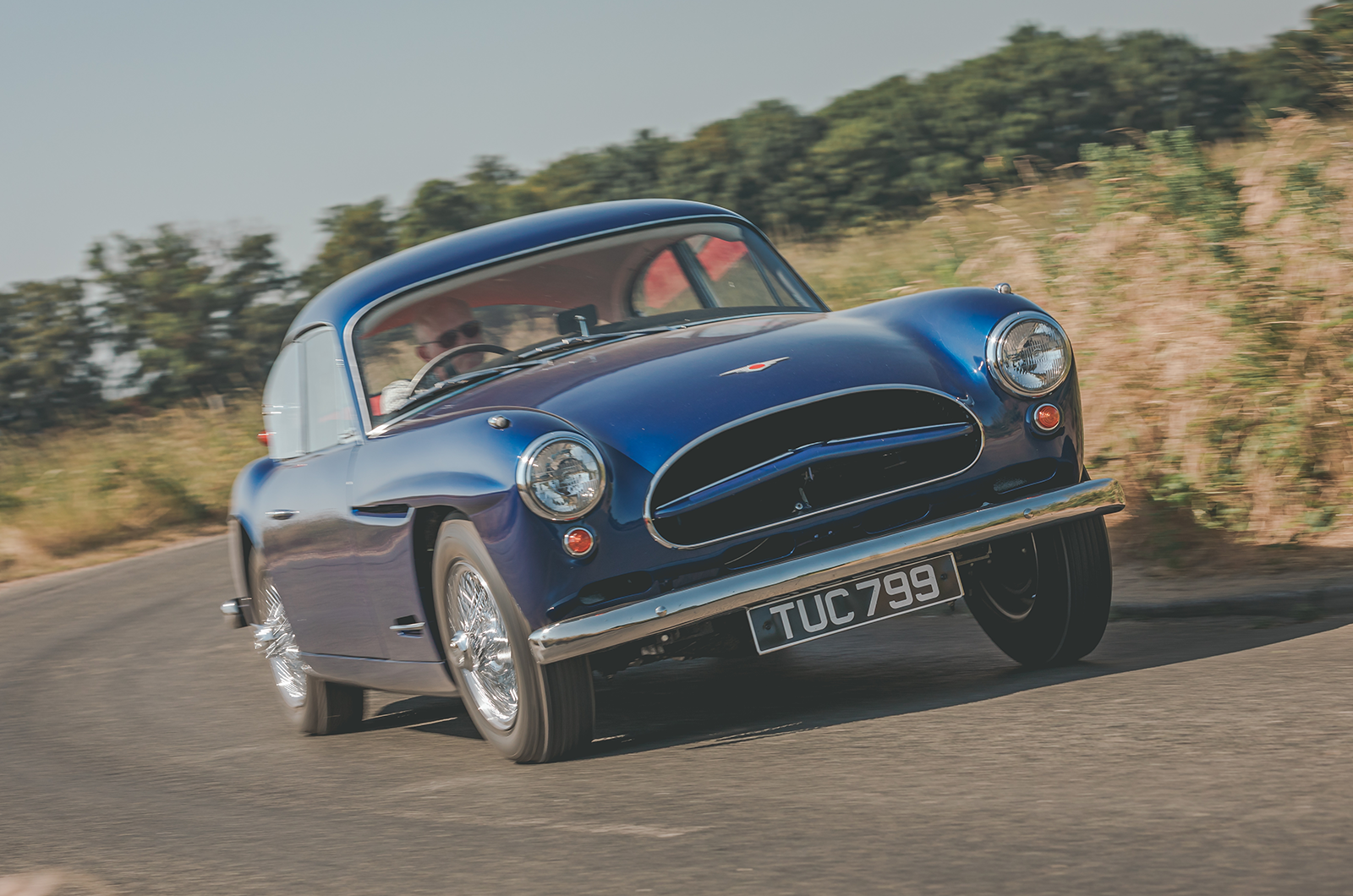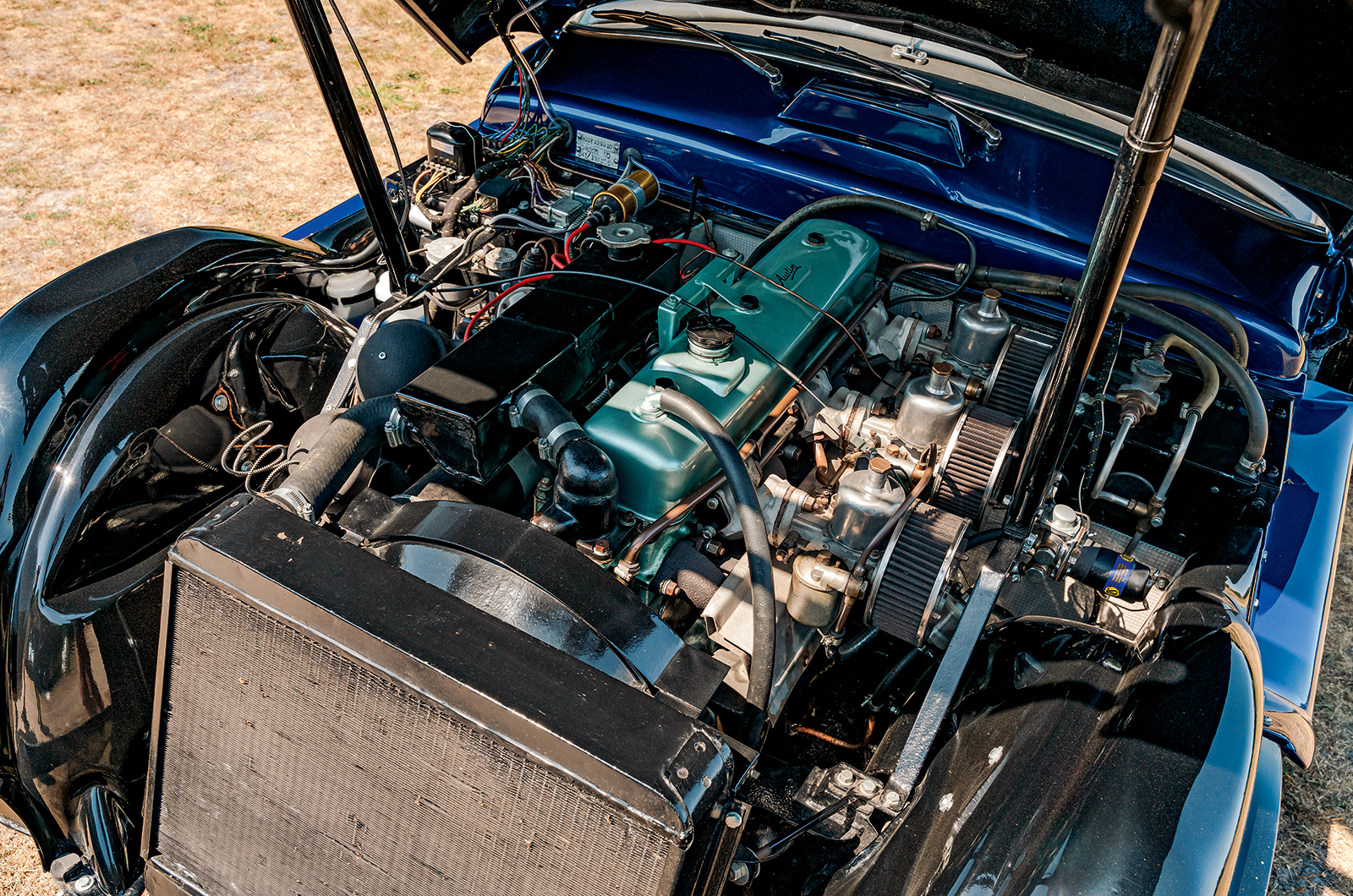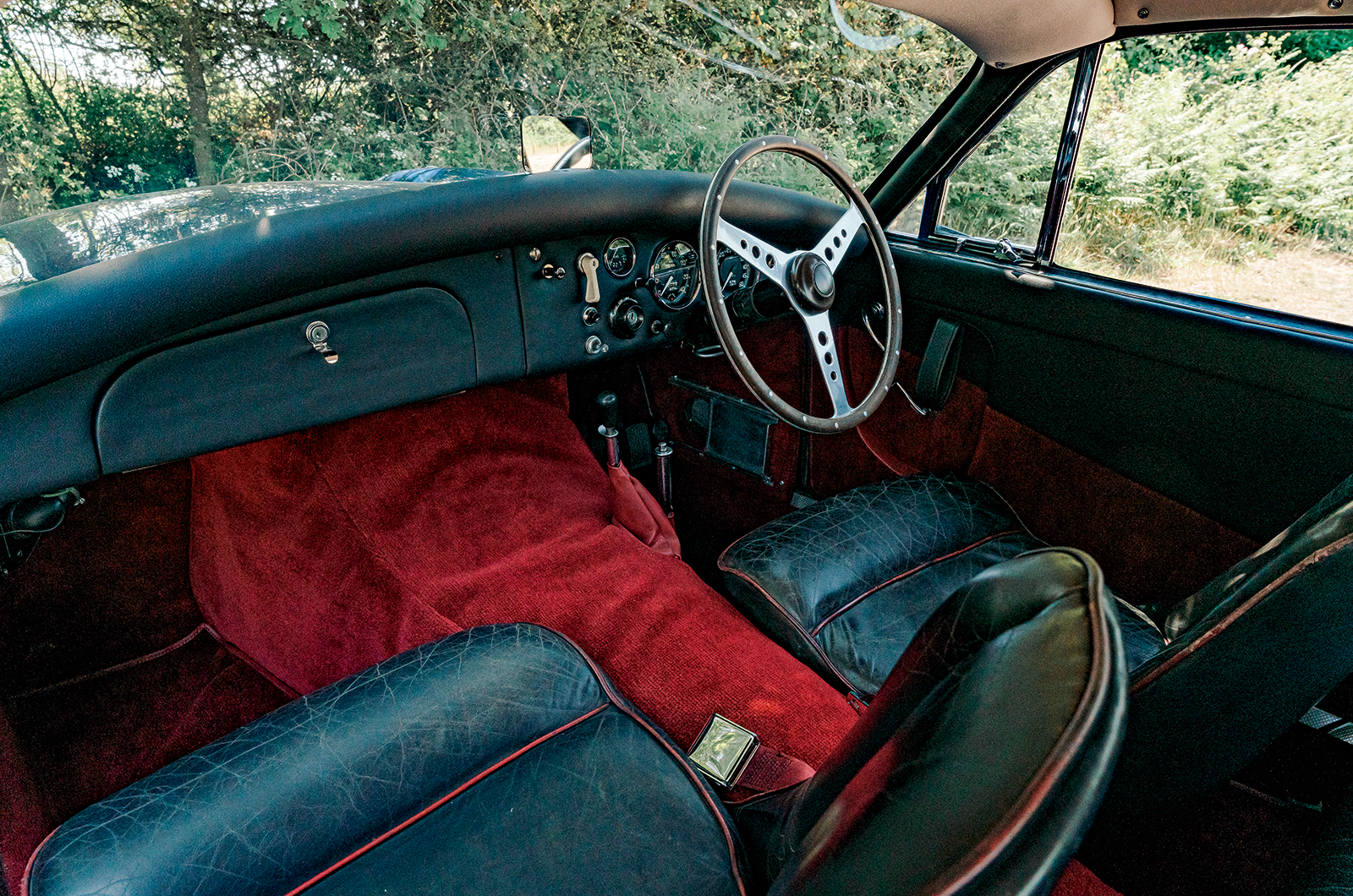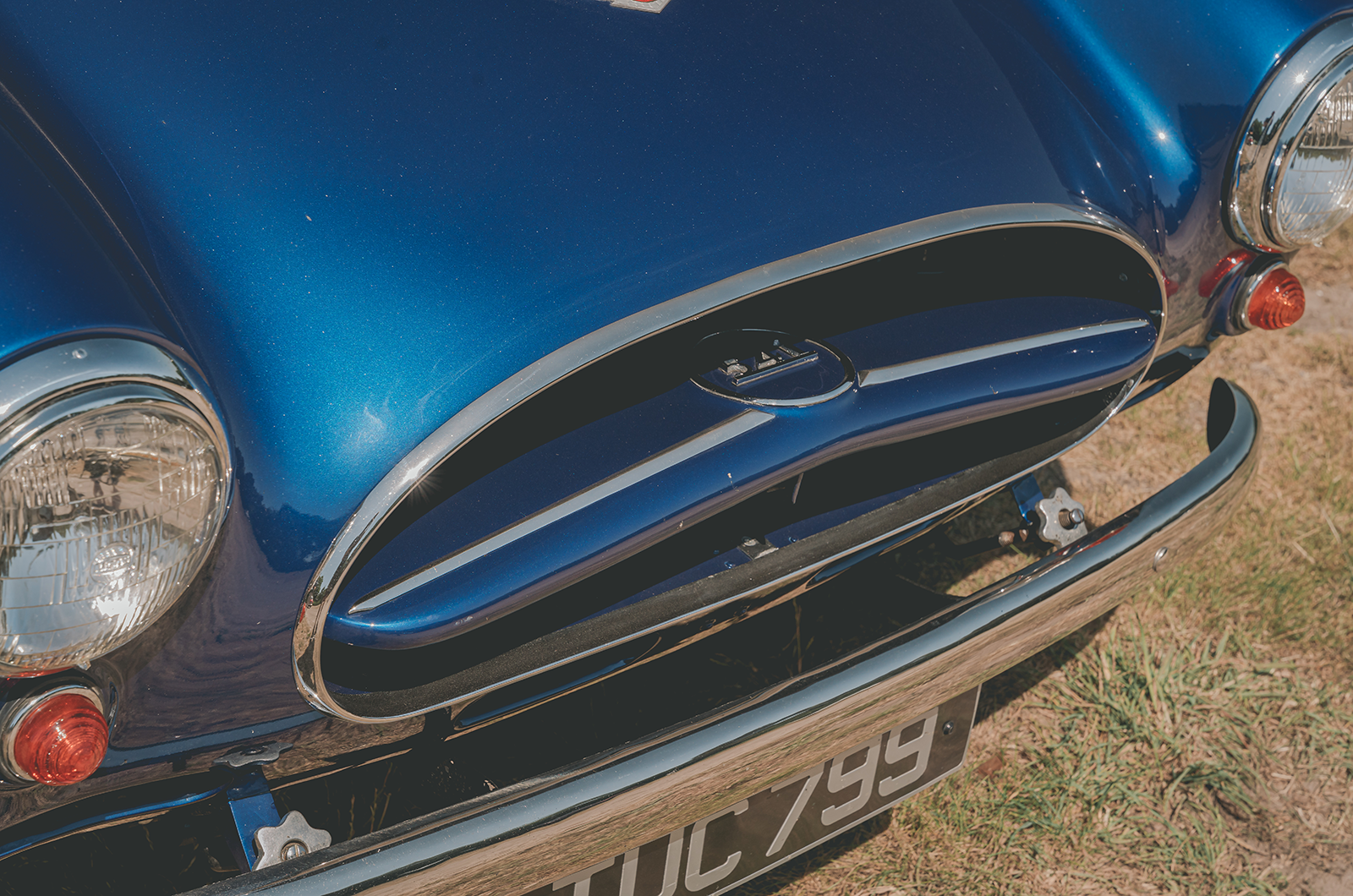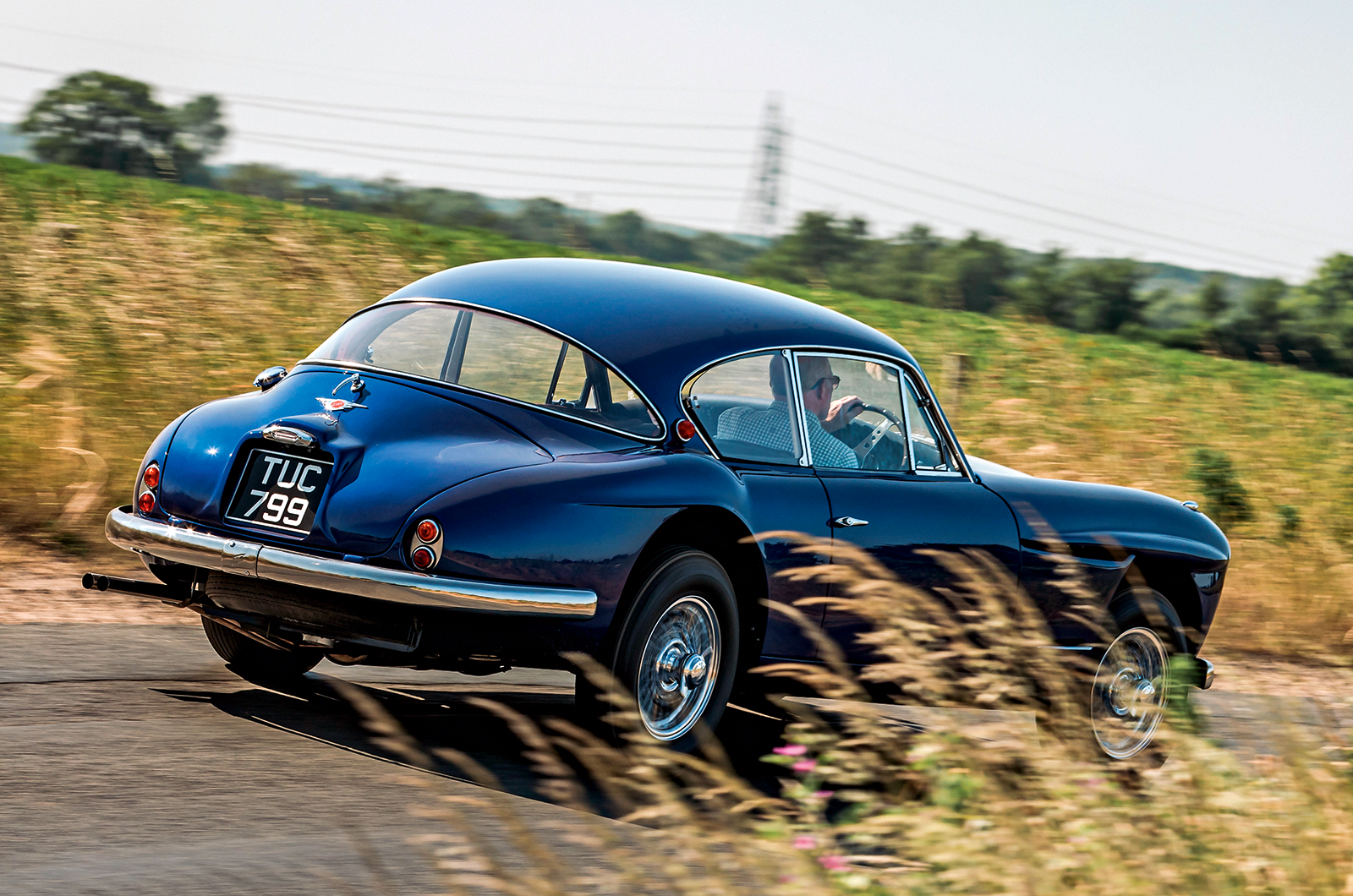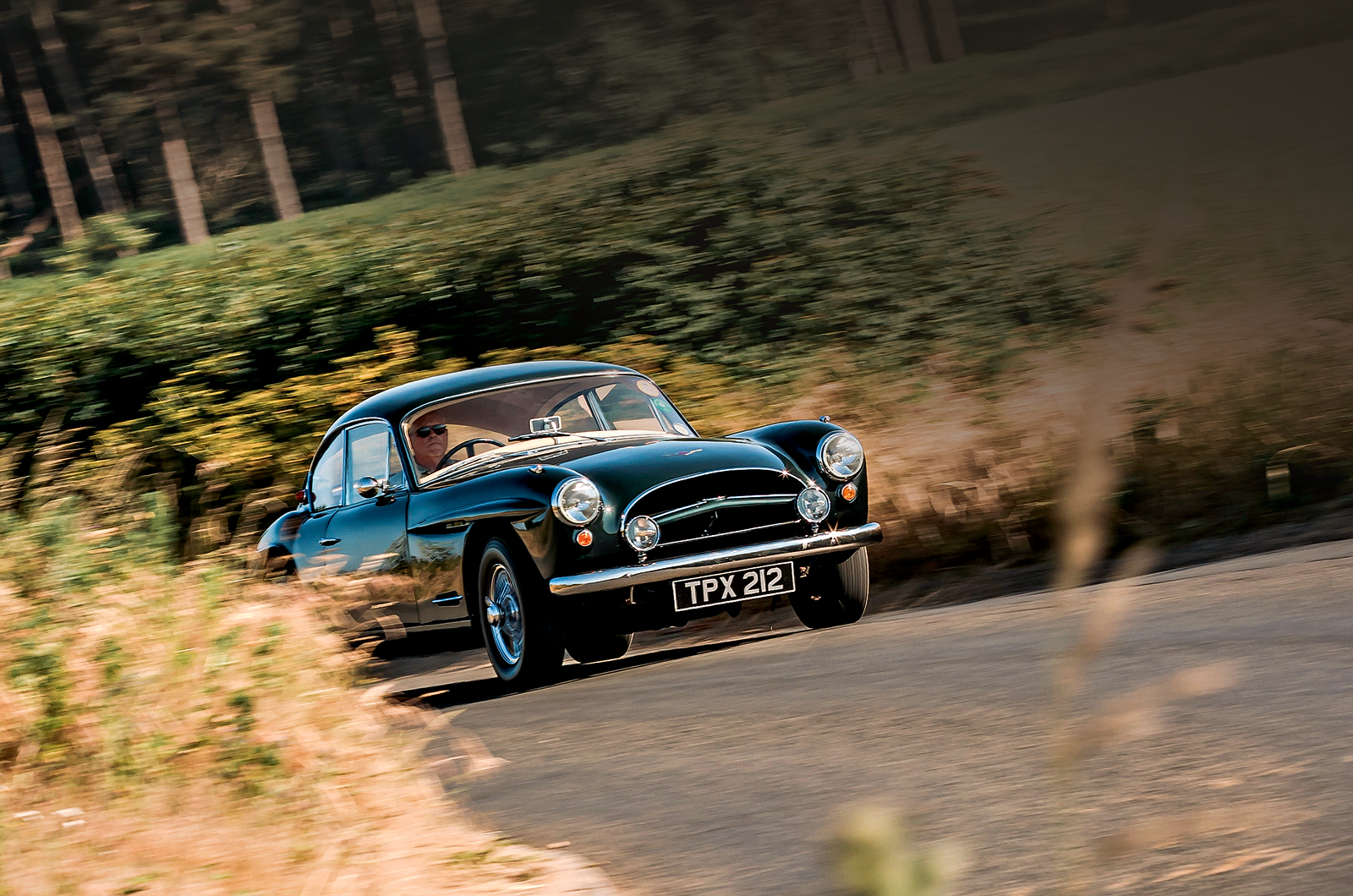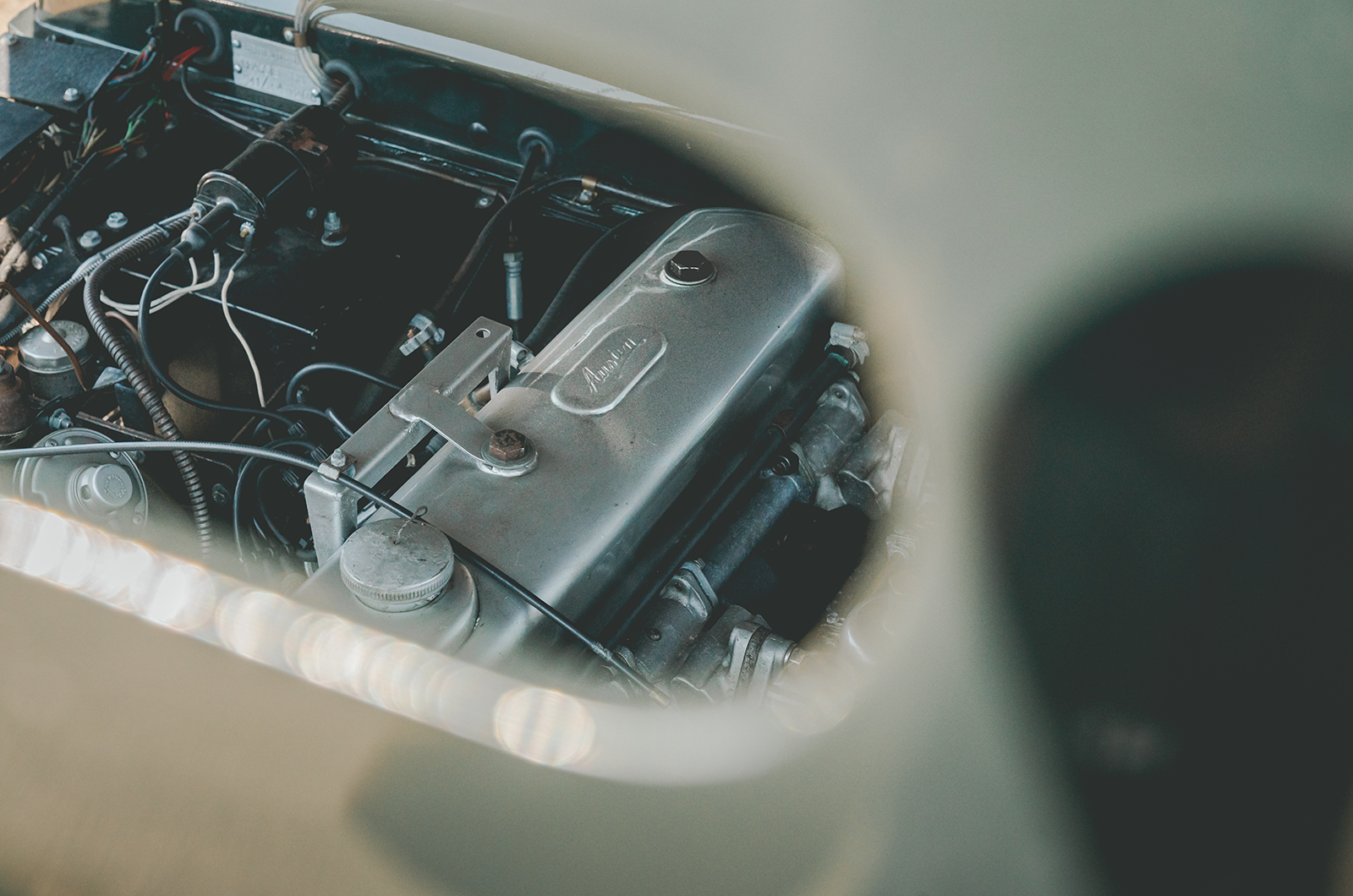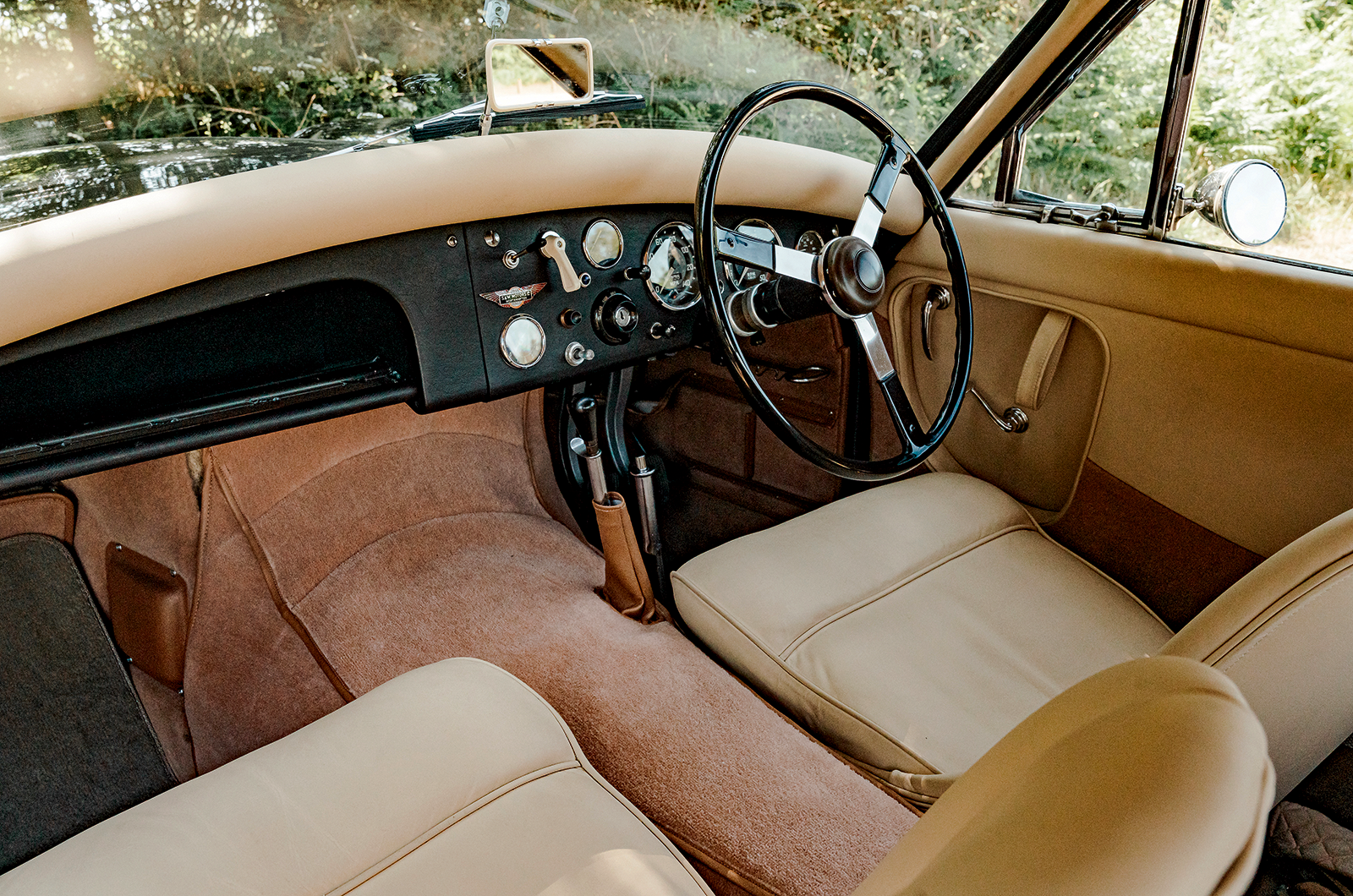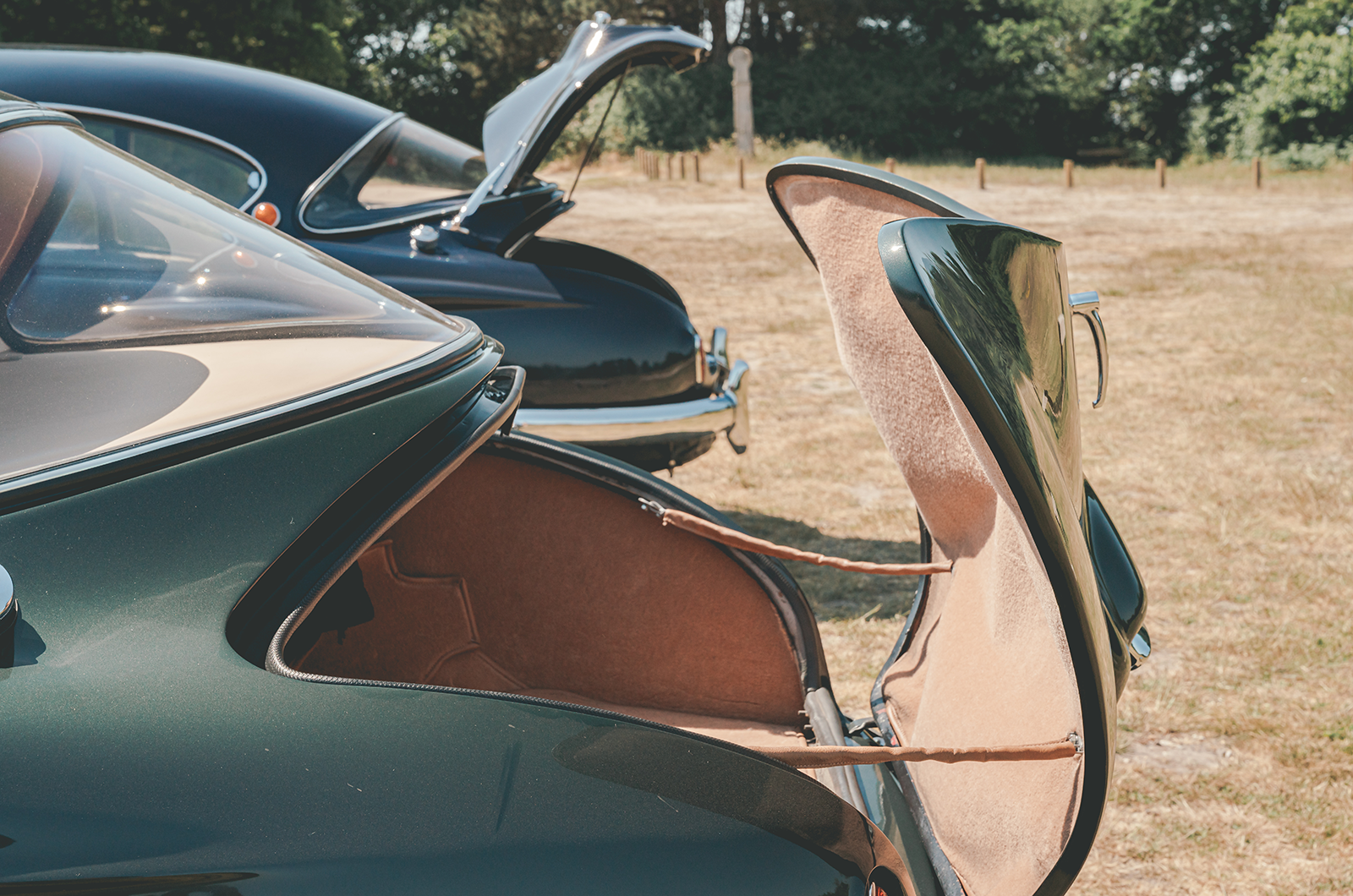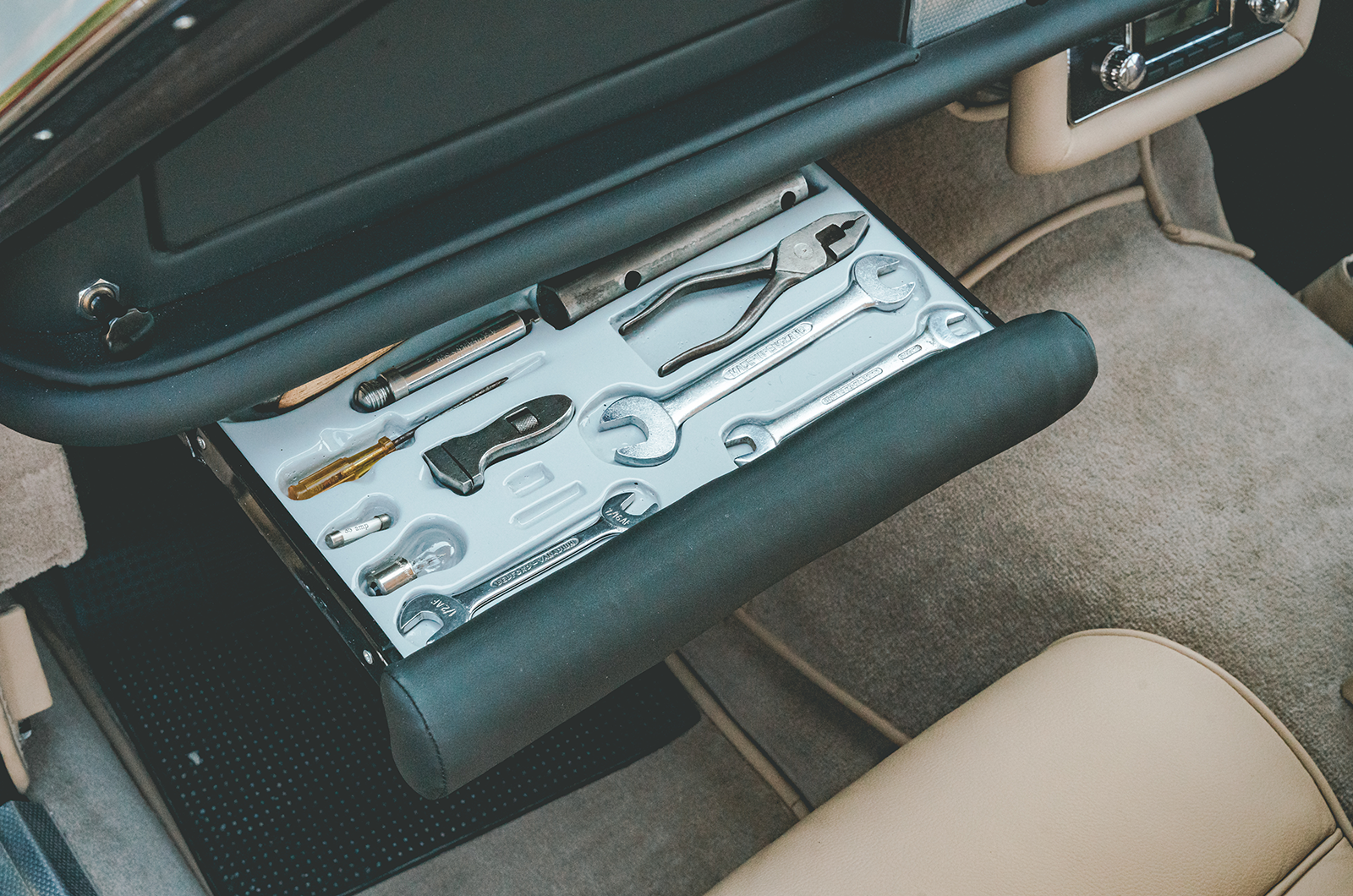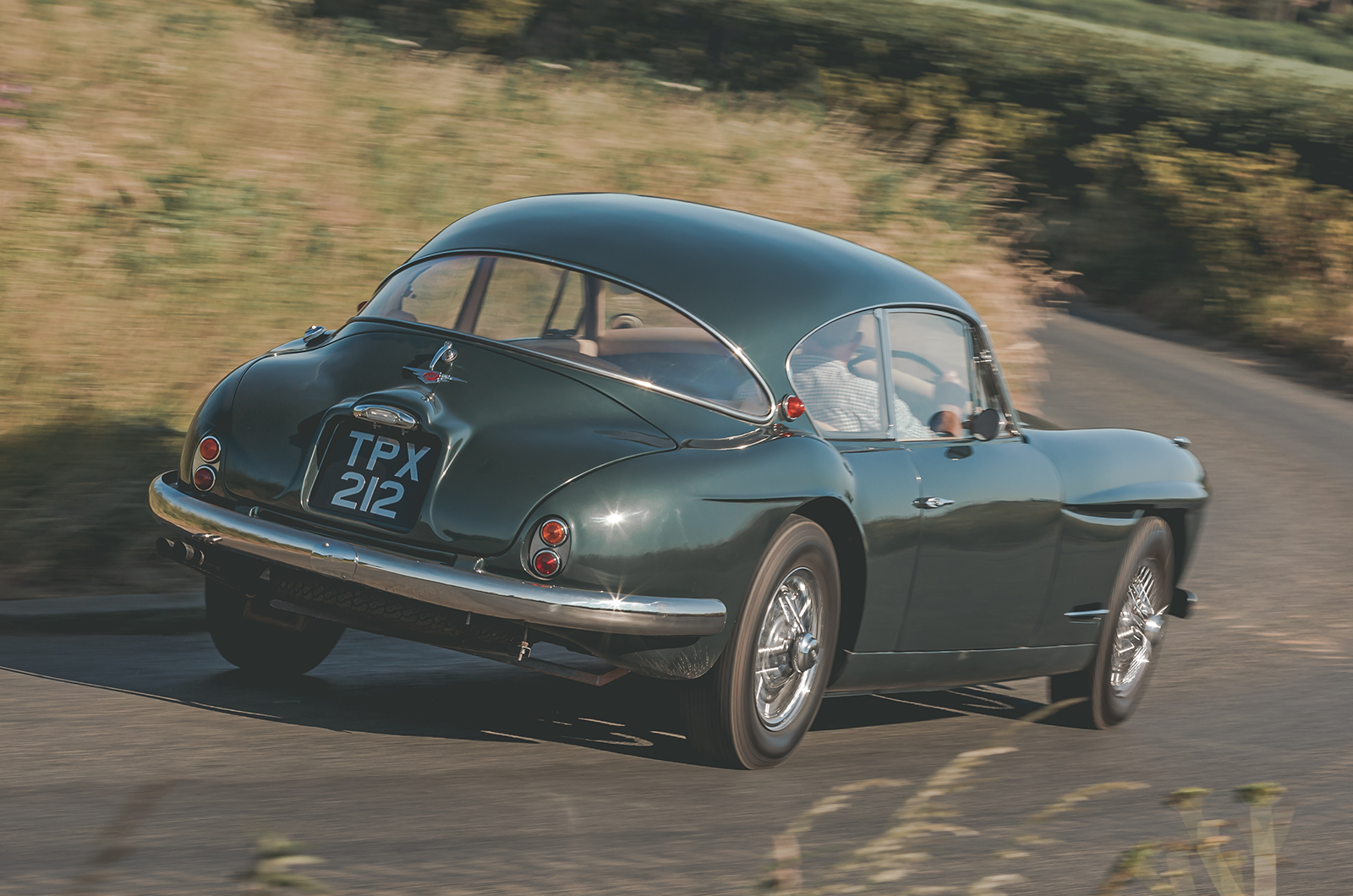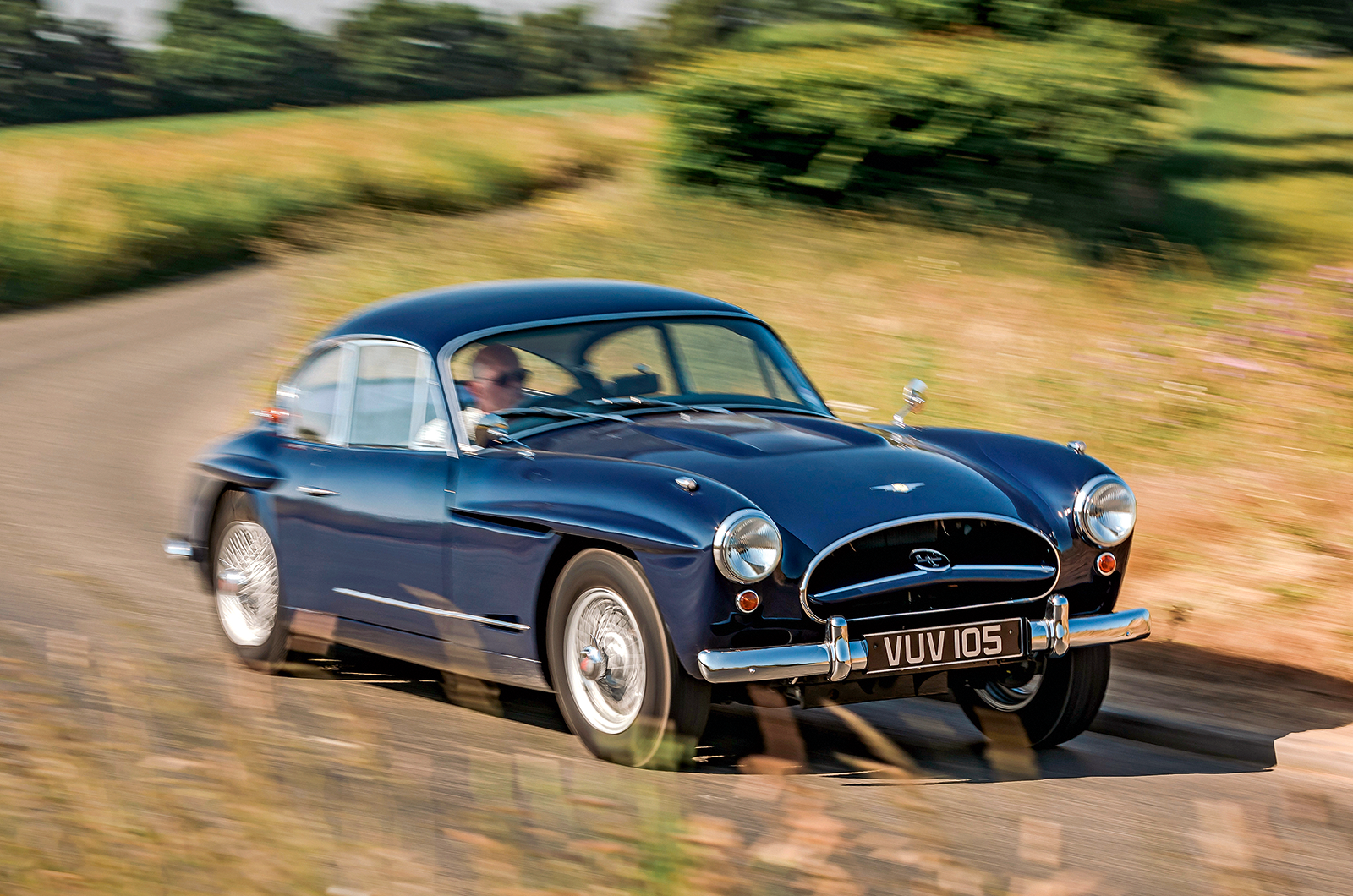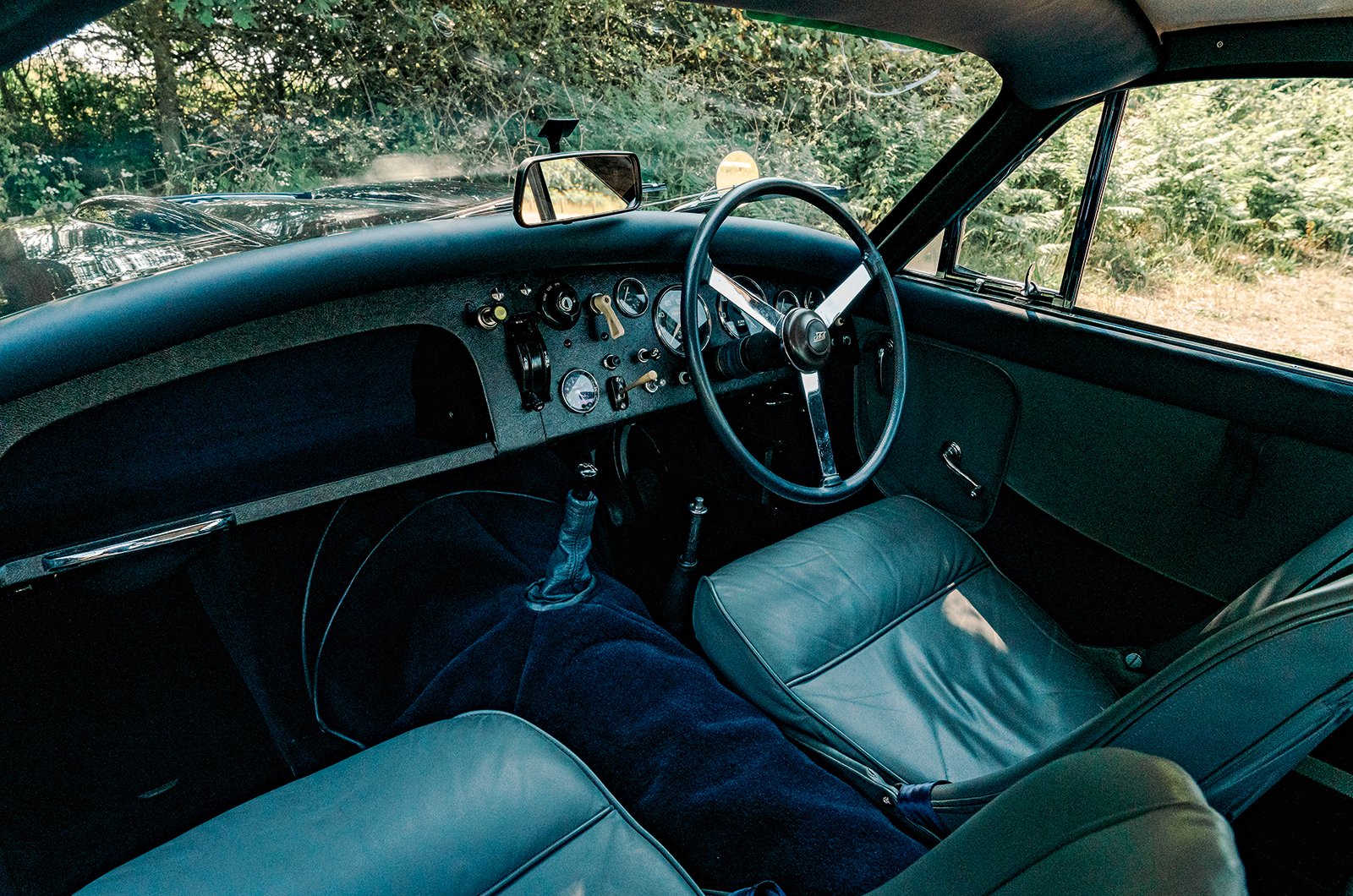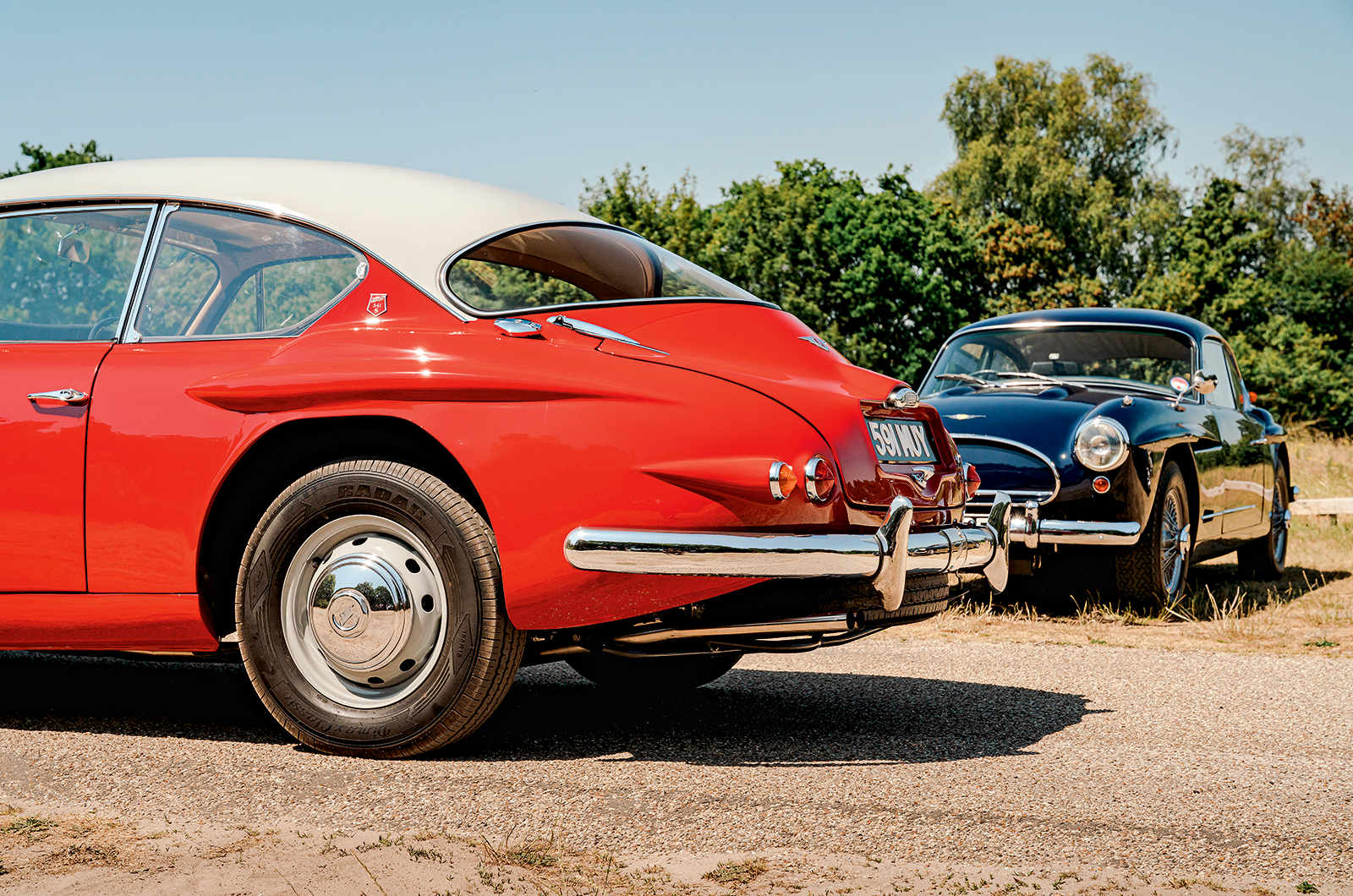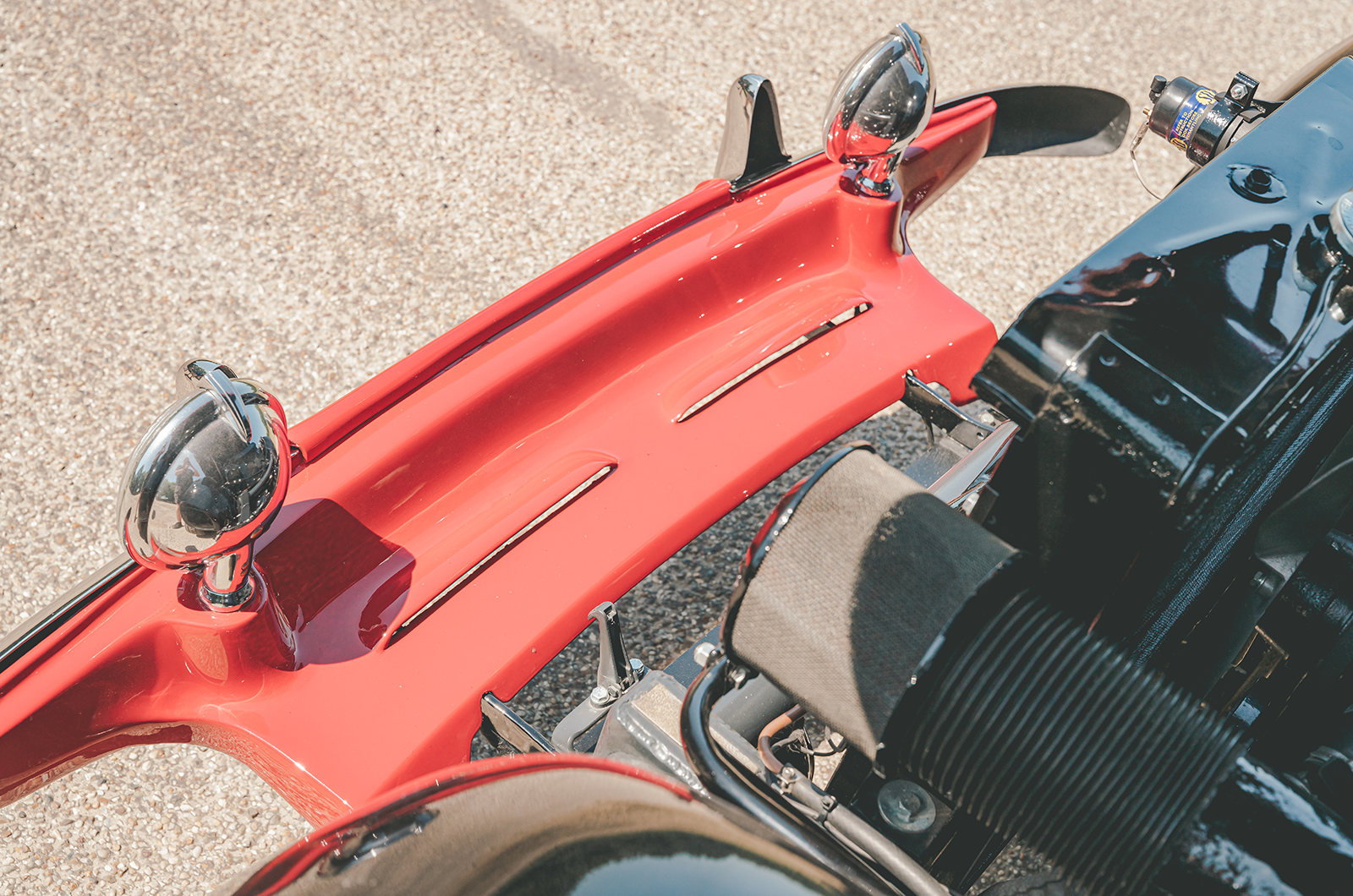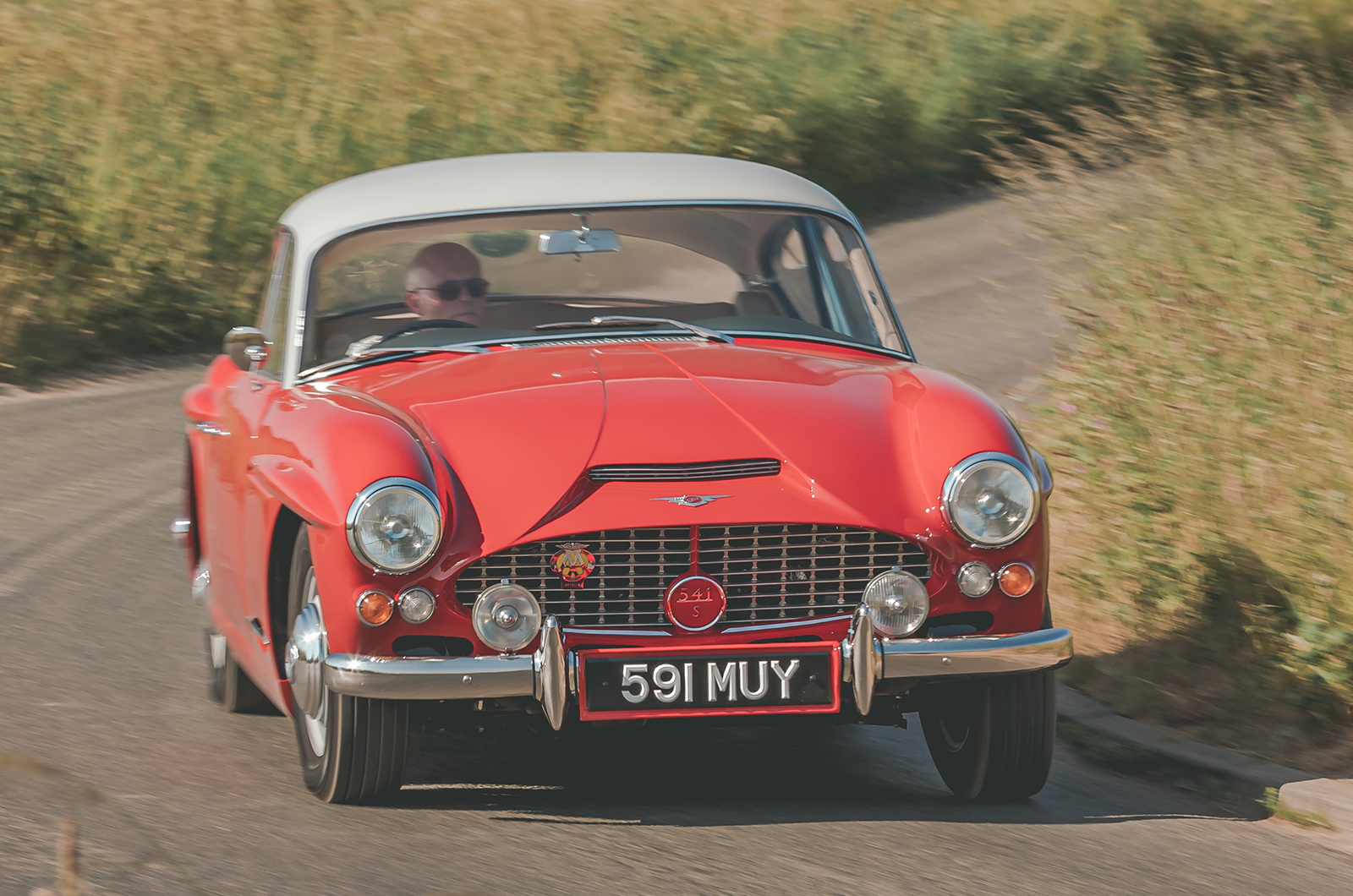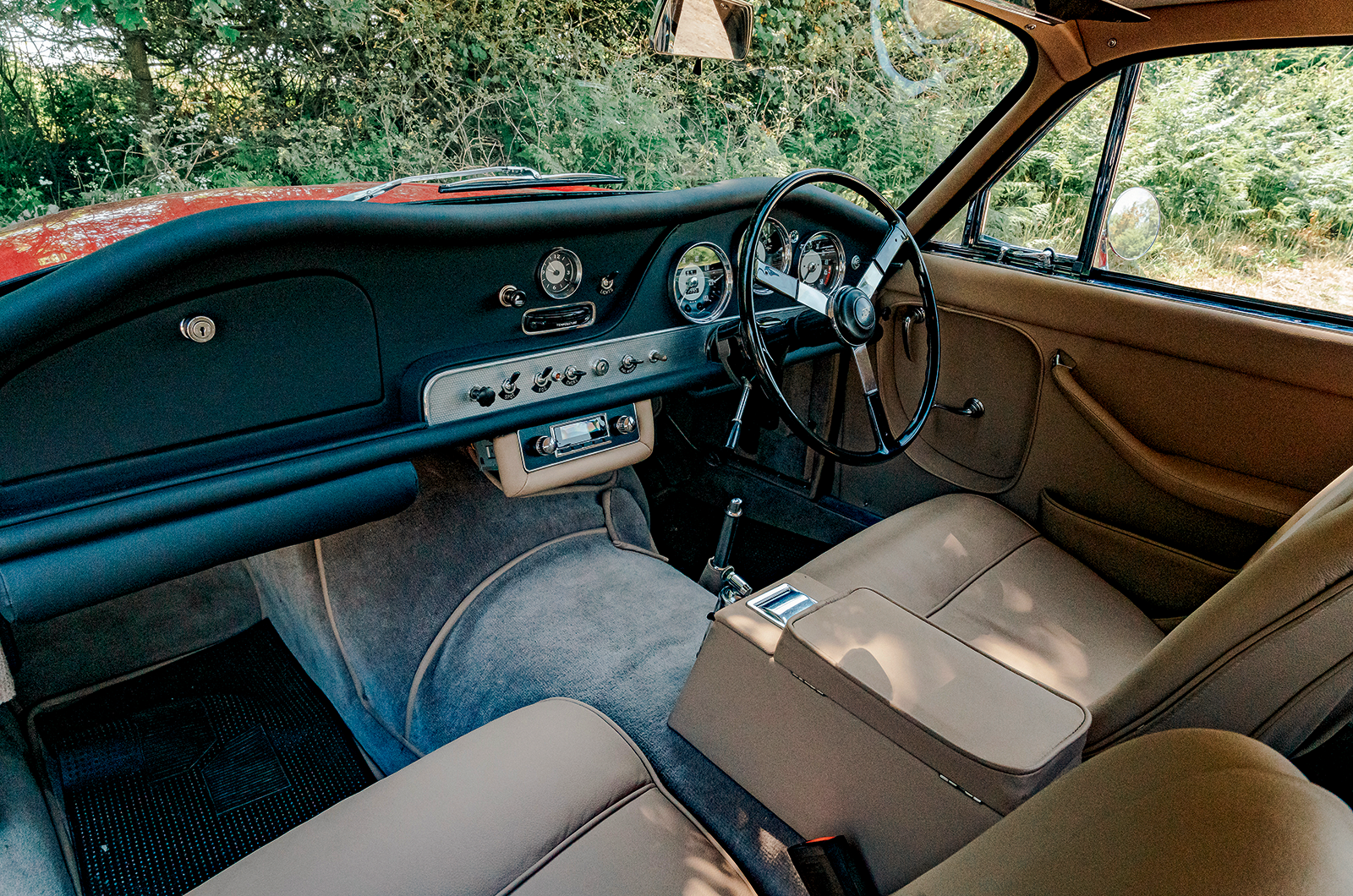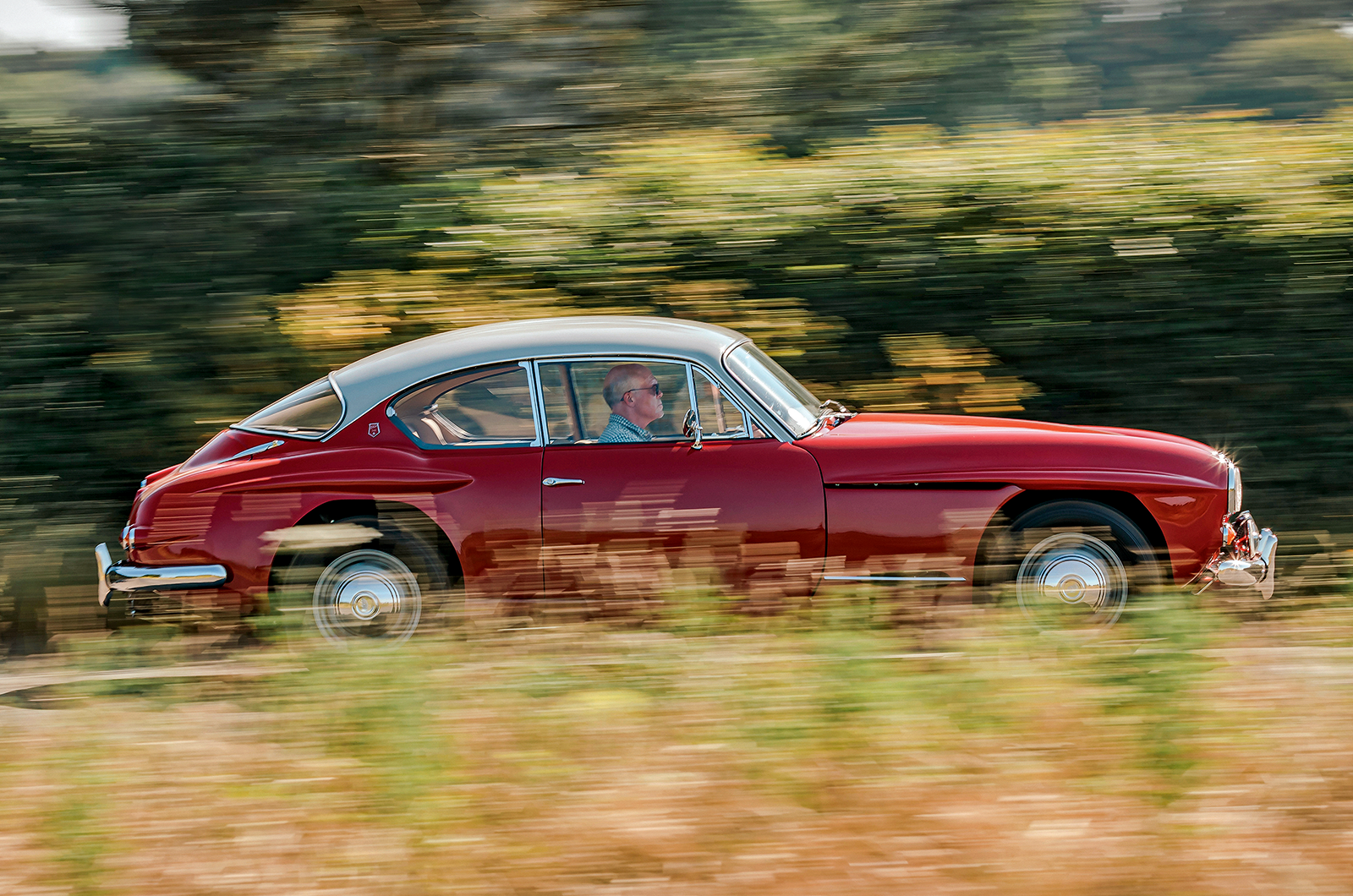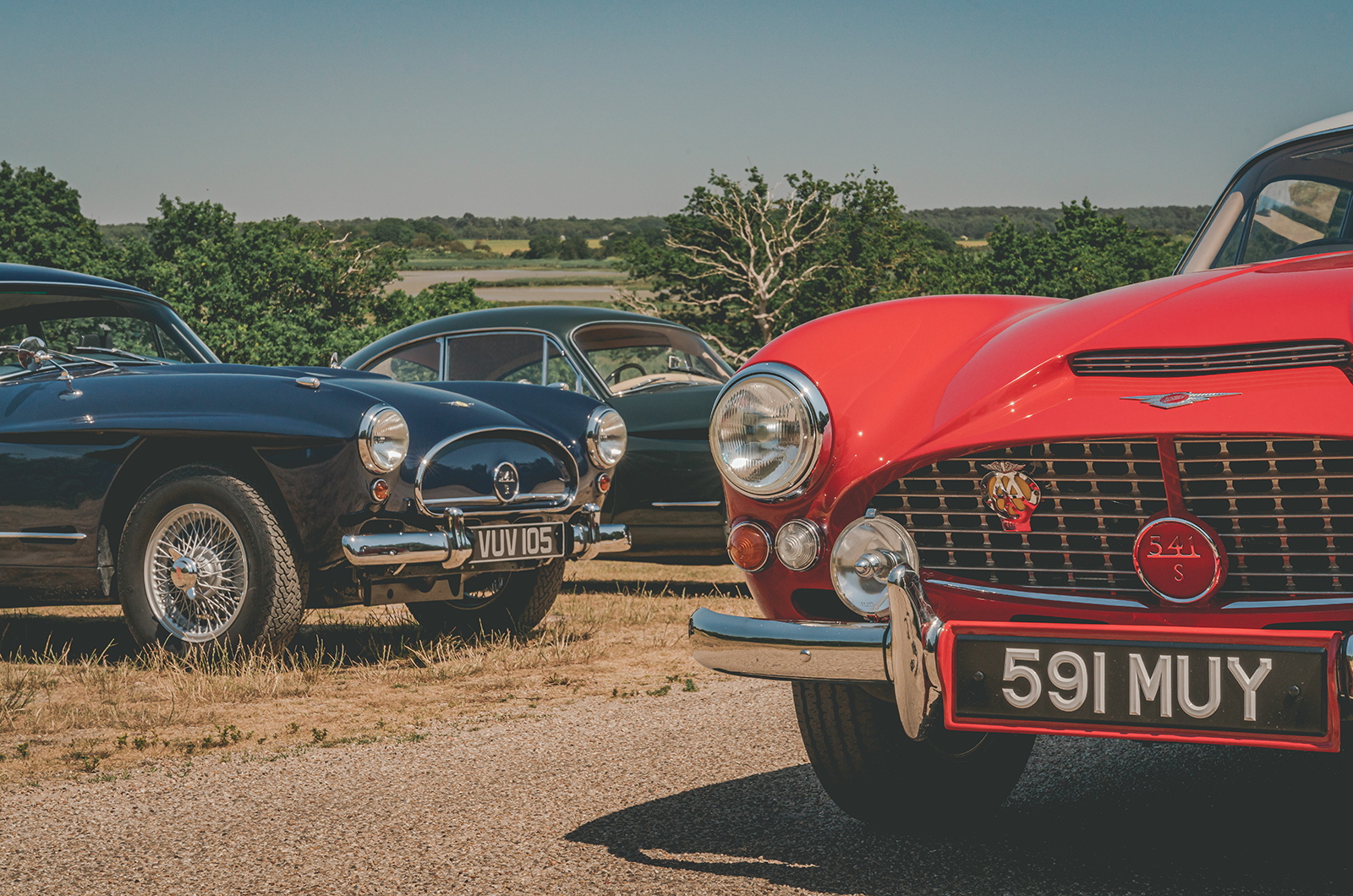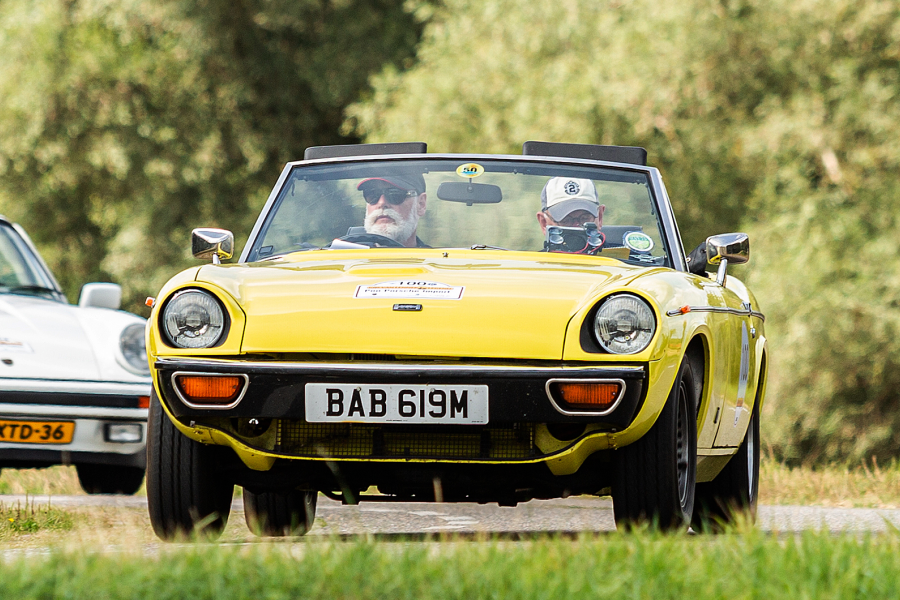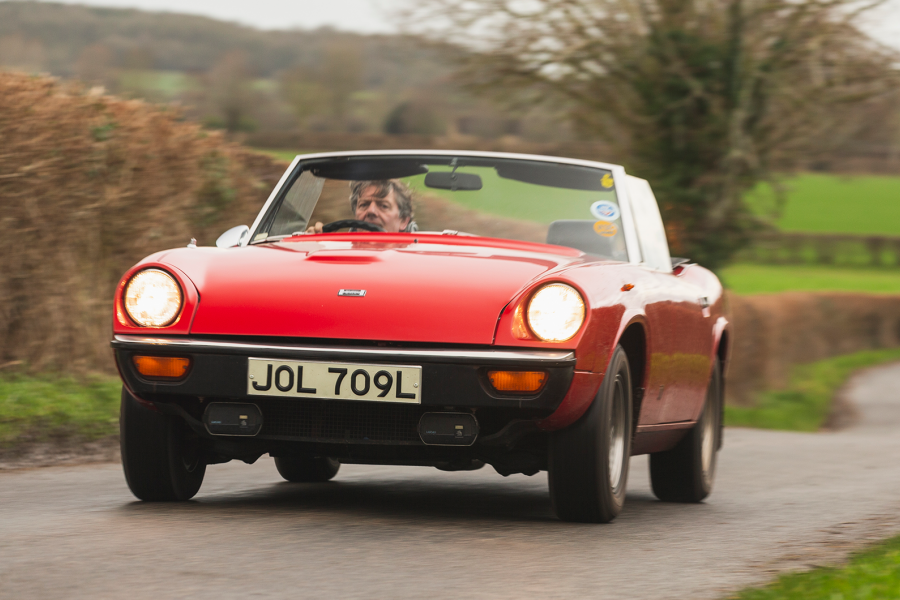All of those qualities are equally evident in the Deep Green 541 Colin Wilson has owned for eight years, most of them spent undergoing a comprehensive restoration and conversion to De Luxe specification.
The De Luxe was built from 1957-’60, with the key change being the addition of Dunlop disc brakes all round, making it the first British-built production four-seater so equipped.
There was more power, too, with the standardisation of the previous cost-option high-compression cylinder head, meaning an uplift in output to around 122bhp.
The addition of rack-and-pinion steering for the Jensen 541R sharpens responses
Introduced after some 100 541s had been built, the cosmetically similar DL’s launch coincided with an upgrade to the steering box, adding strengthened idlers and, illustrating Jensen’s interest in product safety, a universal joint built into the steering column, allowing it to collapse on impact.
Colin’s DL rides on 15in, 185-section radial tyres, so it’s hard to tell how much the steering revisions are responsible for the marked change in the car’s handling.
Either way – and sorry for the spoiler – this is the sweet-spot of the quartet.
Even at lower speeds, the steering is more decisive on turn-in, lighter and more granular in feel.
This classic Jensen 541R’s Moss ’box moves the gearlever to the centre of the transmission tunnel
Where the earlier 541’s drum brakes required a concerted pedal effort to shed speed, the Dunlop discs on this car offer significantly greater reassurance, both in effort and feel.
The performance of the De Luxe feels more sprightly than that of the earlier 541, too.
In theory, David Hillman’s 541R, a model also added to the range in 1957, should represent a sea-change.
Aesthetically it does, the most obvious clues being a redesigned rear with neater light clusters and a top- rather than bottom-hinged bootlid.
The Jensen 541R can be coaxed into gentle oversteer that’s easy to control
In addition, the 541R received longer chrome side strips, bolder rear wheelarch strakes and overriders.
Beneath the glassfibre was a switch to rack-and-pinion steering, but, curiously, a retrograde move from telescopic to lever-arm dampers, sourced from the Austin Atlantic.
The R’s drivetrain had a Moss gearbox, with its lever sprouting from dead-centre along the tunnel, and was powered by Austin’s DS7 engine, a more potent, better-breathing version of the DS5, making 150bhp.
The arrival of the Jensen 541S signalled another restyle
Despite eye-catching performance figures – The Autocar achieved a 127.5mph maximum, up 13mph on the DL The Motor tested two years earlier – production reverted to the original unit after only 53 cars, due to questionable reliability.
David has sought to redress the balance in his later car, with a DS5 engine in semi-race tune generating 180bhp.
From the off, the engine note is more vocal, a deep-throated snarl accompanied by extra induction noise.
The unit is freer-revving… but 40% more powerful? It doesn’t feel it, yet is an enthralling drive all the same, in part because the higher output excites the 541’s body-on-chassis set-up far more, and you’re left feeling that it’s perhaps a step too far – especially riding on archaic lever-arm dampers.
The Jensen’s entire front end lifts up, not just the bonnet, making the Austin ‘six’ very easy to access
The saving grace is the extra precision of the R’s steering rack and, though it’s a minor point, use of a leather- rather than wood-rimmed wheel, which feels more tactile and is easier to grip.
This car also has the strongest brakes by some margin, even if they do feel slightly over-servoed.
By the time Derek Simonds’ 541S reached the market in 1960, Jensen was already looking seriously at Chrysler’s V8 as a way of delivering higher outputs out of the box, with no impact on complexity or durability (it had fitted the unit to one of the last 541 De Luxes to analyse its performance and drivability).
This shapely Jensen 541S was the third example built
The S grew in width by 4in with a view to accommodating the larger engine, though ultimately it wasn’t used until the C-V8’s arrival in 1963.
The S is easily identified by its conventional front grille and redesigned bonnet, with the earlier models’ front flap a thing of the past.
It got yet another small rear-end redesign, losing the high-mounted indicators and introducing two larger, separate tail-lights just above the bumper.
The much-improved cabin makes the Jensen 541S feel more modern
Sitting in the fetchingly bright and comfortable cabin, it’s clear that Jensen had turned its attention to ergonomics, too: gone is the rather Heath Robinson dash, replaced by a more logical arrangement with a raised top-roll for better dial visibility.
The S standardised GM’s four-speed Hydramatic auto, operated via a column-mounted quadrant, with the Moss manual ’box available only as an option.
With no ‘Drive’ position you start in fourth, and while the new transmission dictates a more relaxed driving style, it also saps much of the performance.
‘Jensen’s core pre-war business was building commercial vehicles and special bodies, but the ambition was to be a car maker in its own right’
At some point in the ’70s this S was fitted with Jaguar power steering, which saves you a workout at low speeds but also robs the car of some of its cornering finesse, which really should be every bit as good as the R.
But see past such non-factory mods and the 541 is a genuine Aston and Jaguar challenger, with an additional layer of exclusivity and innovation that made it the thinking driver’s GT.
That it spurred on Jensen to break still more technical ground in the future makes the 541 special beyond the sum of its parts.
Images: Max Edleston
Thanks to: David Turnage and the Jensen Owners’ Club
Factfiles
Jensen 541
- Sold/number built 1955-‘60/173
- Construction steel chassis, three-section glassfibre body
- Engine all-iron, ohv 3993cc straight-six, triple SU carburettors
- Max power 117bhp @ 3700rpm
- Max torque 190lb ft
- Transmission four-speed manual, RWD
- Suspension: front independent, by wishbones, coil springs rear live axle, semi-elliptic leaf springs, Panhard rod; telescopic dampers f/r
- Steering cam and roller
- Brakes drums, with servo
- Length 14ft 8in (4470mm)
- Width 5ft 3in (1600mm)
- Height 4ft 6in (1372mm)
- Wheelbase 8ft 9in (2667mm)
- Weight 3262lb (1480kg)
- Mpg 18
- 0-60mph 10.8 secs (with HC head)
- Top speed 115.8mph (with HC head)
- Price new £1285 + Purchase Tax (1955)
- Price now £30-55,000*
Jensen 541 De Luxe
(where different to 541)
- Sold/number built 1957-‘60/53
- Max power 122bhp @ 3700rpm
- Brakes Dunlop discs, with servo
- Price new £1714 + Purchase Tax (1957)
Jensen 541R
(where different to 541)
- Sold/number built 1957-‘60/193
- Max power 150bhp @ 4100rpm
- Max torque 224lb ft @ 2500rpm
- Suspension Armstrong lever-arm dampers f/r
- Steering rack and pinion
- Brakes Dunlop discs, with servo
- 0-60mph 10.6 secs
- Top speed 127mph
- Price new £2866
Jensen 541S
(where different to 541)
- Sold/number built 1960-‘63/127
- Suspension Armstrong lever-arm dampers f/r
- Steering rack and pinion
- Brakes Dunlop discs, with servo
- Price new £3195 15s 2d
*Prices correct at date of original publication
Enjoy more of the world’s best classic car content every month when you subscribe to C&SC – get our latest deals here
READ MORE
Old dogs, new quicks: Morgan Aero 8 and Jensen S-V8
Transatlantic hybrids: Bristol 407, Jensen C-V8 and Gordon-Keeble GK1
Midlands derby: Jensen 541R vs Jaguar XK150
Simon Hucknall
Simon Hucknall is a senior contributor to Classic & Sports Car
